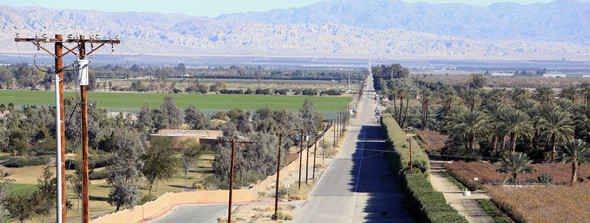|
SACRAMENTO – Yesterday the California Air Resources Board approved the Community Emissions Reduction Program (CERP) for the Eastern Coachella Valley. This is the second CERP approved by the board in the Salton Sea region and the fifth brought forward by the South Coast Air Quality Management District. Across California, the board has approved 10 CERPs as mandated under Assembly Bill 617.
Residents living in low-income communities in the northern area of the Salton Sea have been burdened with air polluted with emissions from diesel-powered vehicles, dust from recreational off-roading and the area surrounding the Salton Sea, open burning and illegal dumping, and pesticide applications.
“This CERP is a giant step forward to protect the health of thousands of residents of the Eastern Coachella Valley,” said Deldi Reyes, Director of the Office of Community Air Protection at CARB. “It is the result of Community Steering Committee members’ passion, dedication and hard work. This was aided by the fact that they were able to quickly and successfully transition to virtual meetings during the development phase of the CERP over the past 18 months with staff from CARB and the South Coast air district.”
As required by the Community Air Protection Blueprint, the South Coast air district convened a Community Steering Committee (CSC) made up of 38 members including local residents, representatives of community-based organizations and other stakeholders. The steering committee held 25 meetings between January 2020 and June 2021 to develop the plan.
Some of the key courses of action in the CERP include strategies to reduce emissions from traffic, including diesel trucks that traverse the area. The plan also identified funding opportunities to replace older diesel school buses and to incentivize the replacement of older high polluting on-road and off-road equipment.
Since open burning and illegal dumping are a major source or air pollution in the area, the committee plans to establish an air quality sensor network. It will also pursue collaborative partnerships to participate in outreach and enforcement and identify funding for equipment or agricultural services to be used as alternatives to agricultural burning.
For pollution related to the area surrounding the Salton Sea, the committee plans on expanding monitoring networks and improving notification systems for dust events. It will also pursue collaborative partnerships to support continued dust suppression projects and identify funding and collaboration opportunities for air filtration systems and weatherization projects for schools and residences.
In adopting the plan, the board directed the South Coast air district and CARB staff to guide the implementation, including additional discussion, information and clarification to help ensure the plan will achieve measurable emissions reductions in the Eastern Coachella Valley communities. The board also directed staff to implement recommendations based on feedback provided by community and committee members.

Community Air Protection Program
To address the requirements of AB 617 (C. Garcia, 2017), CARB created the Office of Community Air Protection (OCAP) to ensure the reduction of exposure and emissions of criteria air pollutants and toxic air contaminants in the most vulnerable areas of the state. OCAP community liaisons participate in the community steering committees and provide guidance in the development of the community emissions reduction programs. OCAP and other CARB programs develop online tools to make data more accessible and useful in informing CERP decision-making.
Regional and Statewide Efforts
Generally, reduction strategies in community emissions reduction programs throughout the state target emissions for pollutants of concern and from sources of concern that are identified in collaboration with community residents. Successful implementation of the strategies requires strong partnership within the community steering committee and focused coordination between CARB, the local air district, and state and local land use and transportation agencies. CARB has identified emissions and exposure reduction approaches that all community emissions reduction programs should draw from to ensure a comprehensive and rigorous evaluation of potential reductions strategies, including regulations, enforcement, incentives and mitigation strategies.
CARB continues its statewide efforts to achieve emissions reductions in all communities disproportionately impacted by poor air quality.
These efforts include:
|